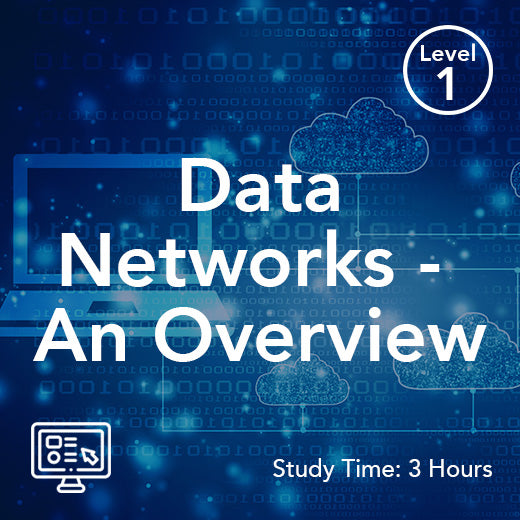Understanding 'NTN Meaning': A Comprehensive Guide
- , by Stephanie Burrell
- 13 min reading time
In the ever-evolving world of technology and communication, acronyms and abbreviations have become a staple in our daily interactions. One such term that has piqued interest is ‘NTN’, which can often leave individuals puzzled about its exact meaning and application. The phrase ‘NTN meaning’ has garnered attention as people seek to unravel its significance across various contexts and industries. In this comprehensive guide, we aim to demystify the term, delving into its origins, applications, and the diverse fields where it is relevant. Join us as we explore the multifaceted world of ‘NTN’, shedding light on its importance and usage in today’s interconnected society. In telecommunications, NTNs are distinct because they operate above the earth's surface, unlike traditional terrestrial networks that rely on ground-based infrastructure.
Introduction to NTN Meaning
Origin of NTN Meaning
The origin of the term 'NTN' is steeped in various interpretations, each linked to different sectors and contexts. Initially, NTN can be traced back to its use in technical domains, where it served as an abbreviation for 'National Tax Number' in financial discussions. This specific use made it a crucial identifier within tax systems, especially in countries focusing on streamlined taxation processes. Over time, the application of 'NTN' expanded into other fields, taking on new meanings relevant to those industries. For instance, in the world of telecommunications, NTN might refer to 'Non-Terrestrial Networks', highlighting its versatility across domains. This adaptability of 'NTN meaning' underscores its importance as a term that has successfully navigated the linguistic evolution brought about by technological advancements. As such, understanding its origin is key to grasping its varied roles in modern communication.
Importance of Understanding NTN Meaning
Understanding the 'NTN meaning' is vital for effective communication and decision-making in various professional and personal contexts. In industries such as finance, technology, and telecommunications, grasping the specific implications of 'NTN' can prevent misunderstandings and facilitate smoother operations. For instance, when dealing with international tax regulations, knowing that NTN refers to 'National Tax Number' ensures that businesses comply with relevant legal frameworks. Similarly, in the tech industry, recognising NTN as 'Non-Terrestrial Networks' helps stakeholders engage with cutting-edge developments in satellite communication and internet connectivity. Moreover, as acronyms continue to proliferate in our digital age, the ability to accurately interpret 'NTN' can enhance one's literacy and proficiency in navigating complex jargon. This comprehension not only aids in professional growth but also enriches personal knowledge, allowing individuals to participate more fully in discussions across diverse fields. Hence, the significance of understanding 'NTN meaning' cannot be overstated.
Common Interpretations of NTN
Industry-Specific Meanings
The ‘NTN meaning’ varies significantly across different industries, reflecting its adaptability and utility. In the realm of finance, ‘NTN’ commonly stands for ‘National Tax Number’, a crucial identifier for businesses and individuals navigating tax systems. This particular usage is prevalent in countries seeking efficient tax administration. In the telecommunications sector, ‘NTN’ signifies ‘Non-Terrestrial Networks’, which are pivotal in advancing satellite communication and expanding global internet access. These networks provide connectivity by leveraging satellites, high-altitude platforms, and drones, especially in remote area and underserved areas where connectivity is lacking. Unlike traditional terrestrial infrastructure, NTNs extend beyond the limitations of ground-based networks to ensure reliable, high-speed communication and bridge the digital divide. Additionally, in the automotive industry, NTN is recognised as a leading manufacturer of bearings, contributing to innovations in vehicle technology and machinery. Each industry-specific interpretation of ‘NTN’ highlights the term’s unique significance within its respective context. Understanding these variations is essential for professionals who must effectively engage with industry-specific terminology and ensure accurate communication in their fields.
Everyday Usage and Contexts
In everyday conversations and contexts, 'NTN' may not always refer to technical or industry-specific meanings but can still hold significant relevance. For instance, 'NTN' might be used informally to denote the phrase 'Need to Know', which is often employed in communication to highlight essential information or updates. This usage is prevalent in both personal and professional exchanges, where clarity and brevity are prioritised. Additionally, in the context of social media and digital communication, 'NTN' can serve as shorthand to streamline dialogue and convey messages quickly. As acronyms continue to dominate online interaction, understanding these everyday applications of 'NTN' can enhance one's ability to engage effectively and efficiently in digital spaces. Recognising these interpretations also aids in avoiding potential misunderstandings, ensuring that communication remains clear and contextually appropriate, regardless of the medium or audience involved. Consequently, the versatility of 'NTN' in everyday usage underscores its role in modern language dynamics.
NTN in Technology and Business
NTN and Non Terrestrial Networks in Telecommunications
In the telecommunications industry, ‘NTN’ stands for ‘Non-Terrestrial Networks’, a term that is becoming increasingly important as technology evolves. Non-Terrestrial Networks encompass communication systems that operate beyond traditional ground-based infrastructures, such as satellites, high-altitude platforms, and even drones. In NTNs, satellites and high-altitude platforms function as base stations in the sky, providing coverage and connectivity similar to terrestrial base stations, especially in remote or underserved areas. These networks are pivotal in extending internet connectivity to remote and underserved regions, thereby playing a crucial role in global efforts to bridge the digital divide by enabling seamless coverage for users. For instance, NTN technology is being leveraged to provide reliable internet access in rural areas where terrestrial networks are impractical or too costly to implement, with satellite connection serving as a key feature that enables communication beyond terrestrial networks. Additionally, NTNs are instrumental in disaster recovery and other critical scenarios, where rapid deployment of communication networks is essential for maintaining reliable connectivity. Establishing a stable communication link between ground devices and non-terrestrial platforms is fundamental to the operation of NTNs. As the demand for seamless and ubiquitous connectivity continues to grow, understanding the ‘NTN meaning’ within this context is vital for stakeholders aiming to stay at the forefront of telecommunications innovation. Consequently, NTNs represent a significant advancement in the quest for global connectivity.
NTN and Global Connectivity in Global Trade
In the realm of global trade, 'NTN' often refers to 'National Tax Number', which serves as a critical identifier for businesses engaged in international commerce. This number is essential for companies operating across borders, as it facilitates compliance with diverse tax regulations and ensures accurate financial reporting. The 'NTN meaning' in this context is vital for avoiding legal complications and streamlining the process of importing and exporting goods. By having a standardised tax identification number, businesses can more easily navigate the complex landscape of international tariffs, duties, and trade agreements. Additionally, possessing an NTN helps firms build credibility and trust with foreign partners, as it demonstrates a commitment to regulatory compliance and transparent operations. As global trade continues to expand, understanding the significance of the National Tax Number becomes increasingly important for companies seeking to enhance their competitiveness and efficiency in the international marketplace. Thus, NTN plays an indispensable role in facilitating global business transactions.
NTN Network Architecture(New Section)
Overview of NTN Network Structure
Non-Terrestrial Networks (NTNs) represent a transformative approach to global connectivity, designed to overcome the limitations of traditional terrestrial networks. By utilizing a blend of spaceborne and airborne platforms—such as satellites, high altitude platforms (HAPS), and unmanned aerial vehicles (UAVs)—NTNs extend network coverage to remote and underserved regions where conventional infrastructure is impractical or cost-prohibitive. This innovative network structure enables seamless connectivity for users across the globe, supporting everything from voice calls and data transmission to critical communications in challenging environments.
The architecture of an NTN is built to ensure low latency communication and reliable service delivery, even in the most isolated locations. Key elements of the network include satellite constellations orbiting the Earth, HAPS stationed in the stratosphere, UAVs providing flexible coverage, and ground stations that link the non terrestrial network to existing terrestrial infrastructure. User equipment, such as mobile devices and IoT devices, connects to these platforms via satellite or air-to-ground links, ensuring that essential communication services are available wherever they are needed. This comprehensive approach not only bridges the digital divide but also supports critical operations in sectors like disaster recovery, environmental monitoring, and the automotive industry.
Key Components and Design Principles
The effectiveness of an NTN network lies in its carefully orchestrated components and forward-thinking design principles:
-
Satellite Constellations: Satellites operating in Low Earth Orbit (LEO), Medium Earth Orbit (MEO), and Geostationary Earth Orbit (GEO) form the backbone of global coverage. These satellites play a crucial role in extending network services to remote areas, ensuring that connectivity is not limited by geographical location.
-
High Altitude Platforms (HAPS): Positioned between 8 and 50 kilometers above the Earth’s surface, HAPS offer a cost-effective solution for regional coverage. Acting as relay nodes, these high altitude platforms provide seamless service links and can be rapidly deployed to address connectivity gaps or support critical communications during emergencies.
-
Unmanned Aerial Vehicles (UAVs): UAVs, or drones, add flexibility to the NTN architecture by delivering temporary or targeted coverage in specific areas. Their ability to be quickly deployed makes them invaluable for disaster response, environmental monitoring, and extending network coverage to underserved regions.
-
Ground Stations: Serving as the interface between non terrestrial and terrestrial networks, ground stations facilitate communication between user equipment and the core network. They manage the flow of data between satellites, HAPS, and terrestrial infrastructure, ensuring efficient and reliable connectivity.
-
User Equipment: Devices such as smartphones, IoT devices, and small aperture terminals connect to the NTN via satellite links or air-to-ground connections. This enables users in remote areas to access essential communication services, participate in global telecommunications, and benefit from low latency, high reliability connections.
The design of NTN networks prioritizes seamless integration with existing terrestrial networks, leveraging inter satellite links and feeder links to optimize data transmission and routing. Advanced payload technologies—both transparent and regenerative—enable flexible, efficient communication services, supporting everything from voice calls to mission-critical data. NTN technology represents a significant advancement in the field of communications, providing cost-effective solutions for global coverage, supporting operational efficiency in industries like automotive and environmental monitoring, and playing a pivotal role in disaster recovery and bridging the digital divide. By combining the strengths of terrestrial and satellite networks, NTNs are paving the way for a future of truly ubiquitous, reliable, and resilient connectivity.
NTN in Popular Culture
NTN in Media and Entertainment
In the media and entertainment industry, 'NTN' can have various interpretations, often dependent on the context in which it is used. For instance, 'NTN' might stand for 'National Television Network', denoting a major broadcasting entity within a country. These networks play a crucial role in shaping public opinion, providing news coverage, and delivering entertainment content to a wide audience. Moreover, NTN can also refer to specific programmes or segments within a network, gaining a unique identity among viewers. Beyond traditional broadcasting, 'NTN meaning' extends to digital platforms where streaming services and online content providers utilise similar acronyms to brand their channels and shows. This usage underscores the versatility and adaptability of 'NTN' within the fast-paced world of media and entertainment. Understanding these varied meanings is essential for industry professionals and audiences alike, ensuring clear communication and engagement with content across different platforms. Consequently, NTN remains a significant element in the dynamic landscape of media and entertainment.
NTN as a Cultural Reference
'NTN' has also emerged as a cultural reference, finding its way into various forms of art, literature, and internet culture. In many instances, 'NTN' might be used as shorthand in dialogues, memes, or social media posts, reflecting its integration into everyday language. This usage can often be context-specific and may vary widely based on regional and cultural nuances. For example, in online communities, 'NTN' could signify an inside joke or a popular phrase that resonates with a particular group. Additionally, in literature and film, 'NTN' might be employed as a symbolic or thematic element, contributing to the narrative in a subtle yet meaningful way. Understanding these cultural references requires a keen awareness of the context in which 'NTN' is used, as well as an appreciation for its evolving significance. As such, 'NTN meaning' extends beyond technical definitions, embodying a dynamic element of contemporary cultural expression. This adaptability underscores the richness and diversity of modern communication.
Conclusion and Future of NTN
Evolving Definitions
The 'NTN meaning' is not static; it evolves alongside advancements in technology, changes in industry practices, and shifts in cultural contexts. As new fields emerge and existing ones adapt to modern challenges, the interpretations of 'NTN' will likely continue to diversify. For instance, the rise of innovative communication technologies and the expansion of global digital infrastructure could introduce new definitions and applications for NTN. Similarly, as global trade regulations become more sophisticated, the financial interpretation of NTN may also evolve to encompass broader aspects of international commerce. Cultural shifts, driven by the rapid pace of internet culture, will further add layers of meaning to the term. This evolving nature highlights the importance of staying informed and adaptable, ensuring that one's understanding of 'NTN' remains current and relevant. Looking forward, the multifaceted world of NTN promises to offer intriguing developments that will continue to shape how we communicate and operate across various domains.
Implications for the Future and the Digital Divide
As we look towards the future, the implications of the evolving 'NTN meaning' are significant across various sectors. In telecommunications, the expansion of Non-Terrestrial Networks could revolutionise global connectivity, making high-speed internet access ubiquitous and fostering economic growth in remote regions. In finance, the adaptation of National Tax Numbers to accommodate digital currencies and international tax harmonisation could streamline global trade and investment. Moreover, as NTN continues to permeate popular culture, it may become a catalyst for new forms of artistic expression and social interaction, influencing how communities engage and communicate. The ongoing evolution of NTN meanings necessitates continuous learning and adaptation for individuals and organisations alike, ensuring they remain competitive and relevant in a rapidly changing world. By embracing these changes, stakeholders can harness the potential of NTN to drive innovation, enhance connectivity, and foster more inclusive growth, ultimately shaping a future that is interconnected and dynamic.

































